GENERAL DATA
In manufacturing: Pharmaceutical
In food: –
🪨 Industries That Use Lapis Judaicus (Jewish Stone)
Lapis Judaicus, historically known as Jew’s Stone, is a fossilized belemnite or conical fossil of ancient cephalopods, often found in limestone deposits in parts of Europe, the Middle East, and Central Asia. Though it is a mineral-fossil, it has been used traditionally in medicine, spiritual practices, and stone therapy across several cultures — particularly in Unani, Islamic, and European medieval medicine.
1. Traditional & Historical Medicine Industry
Lapis Judaicus has been used in Unani (Islamic) medicine, Persian medicine, and medieval European herbalism.
Medicinal Uses (historical):
-
Anti-lithic (kidney/bladder stone remedy): Ground into fine powder and consumed with water or herbal decoctions to dissolve urinary or gall stones
-
Antacid properties: Used to calm acidity or gastric inflammation
-
Astringent for ulcers and internal wounds
✅ Form: finely ground powder, mixed with honey, rose water, or milk
⚠️ Traditionally combined with herbal preparations (e.g., Taranjabin, Cuscuta, Cassia fistula) to balance its effects
2. Unani & Siddha Medicine Systems
In the Unani system, Lapis Judaicus is categorized under “Ma‘danī Adviyah” (mineral drugs).
Therapeutic actions:
-
Mufatteh-e-Hasat (dissolves stones)
-
Muqawwi Kulliya wa Masana (strengthens kidneys & bladder)
-
Mujaffif wa Daafi‘ Tashannuj (drying agent & anti-spasmodic)
✅ Found in formulations like Qurs-e-Kushta Hajariyah or Habbe Hijrul Yahood
3. Mineral Fossil Trade & Museum Collectibles
Lapis Judaicus is valued in the geological and fossil collector community due to its unique spiral form.
-
Sold in natural history stores or geological exhibitions
-
Collected by fossil enthusiasts and mineral traders
-
Sometimes cut/polished and sold as amulet stones in traditional bazaars
4. Folk Healing & Amulet Traditions
In Middle Eastern and Central Asian traditions, the stone has been used in:
-
Protective talismans to ward off kidney ailments or “evil winds”
-
Amulets for bladder health — sometimes worn as pendants or kept in water jugs
-
Spiritual healing kits in folk Islamic or Sufi practices
5. Academic, Archaeological & Historical Research
Used as a subject in:
-
Studies on Islamic medical history and materia medica
-
Medieval European lapidaries and mineralogical texts
-
Unani pharmacognosy courses and museum archives
✅ Found in ancient Persian medical texts and Avicenna’s Canon of Medicine
✅ Summary of Key Applications
| Industry | Common Uses |
|---|---|
| Traditional & Unani Medicine | Dissolving kidney stones, bladder support, antacid |
| Folk Healing & Talismans | Health charms, water rituals, protection amulets |
| Museum & Mineral Collectibles | Fossil exhibits, geological samples, fossil trade |
| Academic & Historical Research | Ethnomedicine, Islamic pharmacopeia, Avicennian studies |
🪨 Key Features of Lapis Judaicus
-
Origin: Fossilized belemnite (extinct marine cephalopod)
-
Color: Usually brownish-gray, conical or cylindrical
-
Texture: Dense, stone-like fossil with distinct spirals or chambers
-
Medicinal Use: Mineral powder (after purification and combination)
-
Cultural Significance: Mentioned in medieval and Islamic healing texts
-
Found In: Iran, Iraq, Syria, Turkey, India, Southern Europe
PRODUCT NAME IN DIFFERENT LANGUAGES
Persian Name: حَجَرالیهود/ Hajar-al-Yahood
German Name (Deutschland, Austria, Switzerland): –
French Name (France, Belgium, Switzerland, Quebec): –
To order Fossil Encrinite, please contact us.
About Lapis Judaicus
Hajrul Yahood is a type of Fossil Encrinite stone found in sedimentary rocks.
All the constituent particles of this stone, or most part of it, are made up of certain parts of the body of living organisms from the Crinoidea family, for this reason, the main origin of the stone is organic compounds.
This stone appears as relatively small pieces, drop-shaped, conical, slightly elongated, pointed, brittle and fragile.
The outer surface of this stone is almost white. But inside it has a grayish color. Longitudinal and parallel lines can be seen on the outer surface of this stone.
This stone is completely opaque and has an earthy appearance and is easily rubbed in water.
Jews’ Stone Temperament
First degree of hot and second degree of dry.
Lapis Judaicus Chemical Constituent
Lime and silicate.
Lapis Judaicus Health Benefits
Hajrul Yahood prevents the production of kidney and bladder stones and melts frozen blood in the bladder.
Eating 1.7 gram of crushed Jews’ Stone with 170 gram of warm water and 3.4 gram of bitter almond oil is a diuretic, stone breaker, melts the frozen blood in the bladder, and it is effective for dysuria.
Lapis Judaicus Side Effects
It is harmful for the liver and stomach and eating it reduces appetite.
Jews’ Stone Dose
Its calcination up to 1.15 gram.
Hajrul Yahood Modifiers
Gum Arabic and Gum Tragacanth.
It is better to use the calcination of this stone along with Alhagi maurorum hydrosol.
🧾 Nutrition Facts – Lapis Judaicus (Jewish Stone)
Common Names: Jewish Stone, Lapis Judaicus
Traditional Use: Medicinal stone used historically in Unani and traditional systems
Botanical Origin: Not botanical – a fossilized concretion often composed of calcium carbonate (CaCO₃) with embedded fossils
Form: Natural stone (powdered or intact)
⚠️ Note:
Lapis Judaicus is not a food and contains no calories, fats, proteins, carbohydrates, or vitamins. It is a non-nutritive mineral substance and should not be consumed as food.
Instead, here’s a Mineralogical Composition Overview appropriate for herbal or mineral medicine sections on your site:
🧪 Mineral Composition (Main Elemental Profile)
| Element/Mineral | Approximate Content |
|---|---|
| Calcium (Ca) | 35–40% |
| Carbonate (CO₃²⁻) | Present (CaCO₃ base) |
| Iron (Fe) | Trace amounts |
| Silica (SiO₂) | Trace–moderate |
| Magnesium (Mg) | Trace |
| Phosphate (PO₄³⁻) | Possibly trace |
🏺 Traditional & Historical Uses
| Use | Description |
|---|---|
| Traditional Medicine | Used as an antacid, antiemetic, and remedy for kidney or gall stones in Unani and Persian medicine |
| Topical Applications | Mixed with vinegar or rosewater for pastes applied to boils or inflammatory skin conditions |
| Internal Use (not recommended today) | Occasionally used in small quantities for gastrointestinal or urinary conditions under traditional medical guidance |
⚠️ Disclaimer
Disclaimer: Lapis Judaicus is a traditional mineral product and not classified as a food or dietary supplement. It is provided for historical and ethnomedical interest only. Not intended for ingestion unless prescribed by a qualified practitioner.


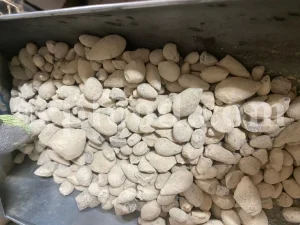

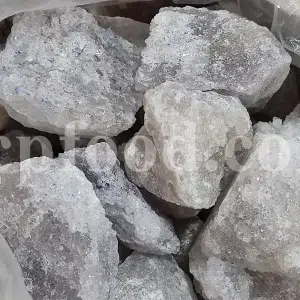
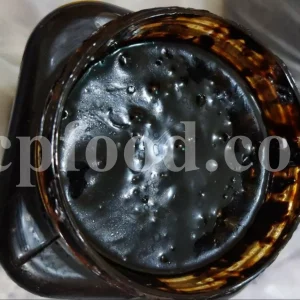
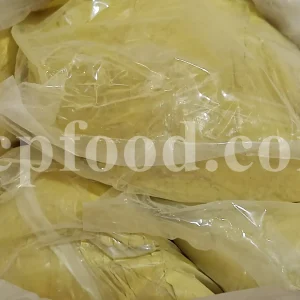
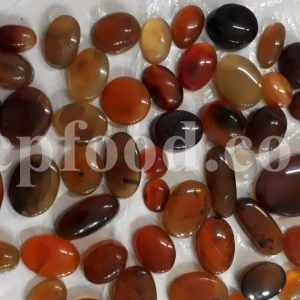
Reviews
There are no reviews yet.